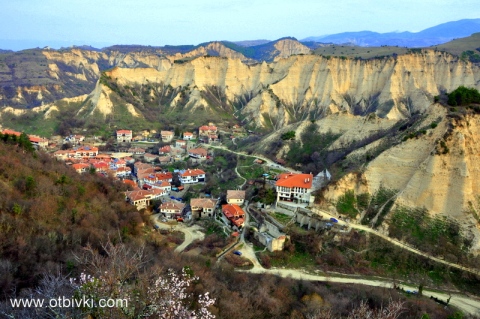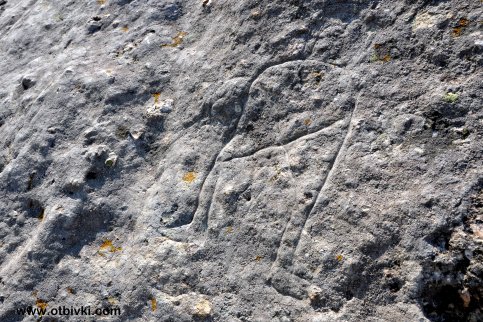Dextrophobia Rooms: Escape Is Sweet!
04.11.2014 § 1 Comment

Success stories seem so few and far between in Bulgaria these days, so it is extremely heartening to be able to report some good news. This past month, alongside the colossal scandal of Bulgaria’s Corporate Commercial Bank imploding to the tune of a 2 billion Euro deficit, some great things have happened in spite of the usual grey mass of doom and gloom. Sofia’s iconic Lion’s Bridge just reopened after extensive renovations, the latest in a string of long-overdue infrastructure improvements presided over by Sofia’s most successful mayor in decades, Ms. Yordanka Fandukova. Four Bulgarian entrepreneurs just sold their hugely successful homegrown software company Telerik to Progress Software for $262.5 million. Finally, Dextrophobia Rooms, a real-life escape game business created by seven dreamer friends in their spare time, is neck-to-neck with St. Alexander Nevski cathedral as the best reviewed attraction on TripAdvisor in Sofia, barely six months after opening.
What is Dextrophobia and is it worth seeing? Read on!
Plovdiv selected for European Capital of Culture 2019
05.09.2014 § 1 Comment
After a five-year, good-natured rivalry with three other cities, my birthplace of Plovdiv has been selected as Bulgaria’s official entrant into the European Capital of Culture program. The other European Capital of Culture for 2019 will be in Italy, where Caglieri, Lecce, Matera, Perugia, Ravenna and Siena are competing in the final round.
Out of 8 original candidates in Bulgaria (Burgas, Gabrovo, Plovdiv, Ruse, Shumen, Sofia, Varna and Veliko Tarnovo), four finalists were selected to submit detailed proposals and to begin implementing strategies and programs towards becoming Capital of Culture. Any one of these cities is well worth a visit.
 Plovdiv
Plovdiv
Continuously inhabited for close to 6000 years, Plovdiv is the third-oldest city in Europe (following Athens and Argos). Throughout its long history it has had multiple stints as an important crossroads city. Notably, as Trimontium to the Romans, Plovdiv was the most important Roman city in the province of Thrace, as it lay on the Via Diagonalis arterial road for the empire. Cobbled Roman streets, theatres, villas, and an entire stadium can be seen there, layered with Ottoman-era and Revival-era homes. The oldest mosque in Europe outside of Moorish Spain, Djumaya mosque, lies at the centre of the city.
Plovdiv: A Promotional Video
11.02.2014 § 2 Comments
Created by the Operational Program “Regional Development”, this video is a perfect companion to my posts about Plovdiv, Bulgaria’s second largest (and oldest) city. As a bonus, you get to hear some narration in Bulgarian, with English subtitles.
The New York Times on Sofia
27.01.2013 § 1 Comment
 Here’s an interesting piece in the NYT on spending 36 hours in Sofia, which I strongly recommend you do if you can’t spend more 😉
Here’s an interesting piece in the NYT on spending 36 hours in Sofia, which I strongly recommend you do if you can’t spend more 😉
Gagarin in Plovdiv
08.09.2012 § Leave a comment

On May 23, 1961, 41 days after completing his pioneering spaceflight, first man in space Yuri Gagarin visited Plovdiv on his celebratory tour. He had coffee on the terrace of Hotel Trimontium with various dignitaries and he was made an honorary citizen of Plovdiv. This makes Plovdiv one of only 22 cities to do so, which is claim to fame enough.
However, what was known to very few people until days ago was that he had signed the hotel’s guestbook. « Read the rest of this entry »
Plovdiv’s Roman Treasures: A Walking Tour
25.07.2012 § 8 Comments

In 1968, the sports field of the Pedagogy Institute in Bulgaria’s second-largest city, sun-drenched Plovdiv, was scheduled for refurbishment. A company of the Army’s construction corps was assigned to expand the field, which involved digging deeper into one of the city’s three hills. However, the Institute never got its field, because what the diggers found underneath were the curved marble seating rows of an immaculately preserved outdoor Roman theatre.
Plovdiv, inhabited continuously since 4000 BC and Europe’s third-oldest city (after Athens and Argos), is known by many names. Settled by the Thracians as Eumolpias, it was conquered by Philip II of Macedon, the father of Alexander the Great, and given the name Philippopolis. After the decline of the Macedonian kingdom, it reverted to the Thracians, who called it Pulpudeva. When the Romans swept onto the Balkans, they called it Trimontium (“City of Three Hills”) and made it a cultural and economic hub of the Roman province of Thrace. The via militaris, one of the Roman empire’s arterial roads, passed through the city, and it thrived on the banks of the Hebros (Maritsa) river, at one time containing numerous public buildings, baths, shrines, villas, with high walls and a Roman grid system in its streets. This walking tour will take you on a trip through its main Roman-era sights.
« Read the rest of this entry »
Melnik: The City of the Sand Guards
13.06.2012 § 1 Comment
Translated with permission from otbivki.com, a Bulgarian-language travel and adventure blog. Melnik is a city approximately 200 km to the south of Sofia, near Sandanski, on the southwestern tip of Bulgaria.
The road is winding before us like a snake in the sun. The white strip of asphalt zooms past expansive vineyards and quiet houses, racing against time towards its final goal. It leads us ever South, leaving the villages of Lozenitza and Harsovo somewhere behind us. We’re approaching Melnik…
The pyramids are the first to greet us. We call them the “sand guards” because they resemble a line of soldiers guarding the city. In their embrace lie nestled the white houses of Melnik – the smallest Bulgarian settlement with city status. It turns out to be warm, unpretentious and somehow full of humble, harmonious beauty.
Perperikon: The City of Stone
07.06.2012 § Leave a comment
Translated with permission from otbivki.com, a Bulgarian-language travel and adventure blog.
In the hot summer day, dust is our most faithful companion. It sticks to our shoes, our face and our clothes as we walk along the narrow path in a single file. I hear our footsteps leave quiet prints and race with the stones – how many generations have taken this path, how many tribes and civilizations have ascended the steep slope, to experience victories, losses, opulence, poverty or death? For centuries, the cliffs have kept their history, ready to share it with every visitor of the City of Stone.
It appears before us, clad in the golden garb of sunshine, regal, serene and unwavering. Its name is Perperikon.
Seven Rila Lakes (Hiking Route)
25.05.2012 § 2 Comments
 The seven Rila lakes are a group of glacial lakes in northwestern Rila. At an altitude ranging from 2100 to 2500 m above sea level, they are the most visited mountain lakes in Bulgaria, and with good reason. Layered one above the other, they are wild, picturesque and clear, and the paths between them are rocky and steep. Buses from Sofia stop at the nearby town of Sapareva Banya, which is a day’s walk from the lakes. Two mountain lodges operate nearby: the old one (“Rila lakes” mountain lodge) and the new one (“Seven lakes” lodge). All lakes are located above the tree line, meaning that the vegetation around them consists mostly of grass and shrubs.
The seven Rila lakes are a group of glacial lakes in northwestern Rila. At an altitude ranging from 2100 to 2500 m above sea level, they are the most visited mountain lakes in Bulgaria, and with good reason. Layered one above the other, they are wild, picturesque and clear, and the paths between them are rocky and steep. Buses from Sofia stop at the nearby town of Sapareva Banya, which is a day’s walk from the lakes. Two mountain lodges operate nearby: the old one (“Rila lakes” mountain lodge) and the new one (“Seven lakes” lodge). All lakes are located above the tree line, meaning that the vegetation around them consists mostly of grass and shrubs.
The “Bulgarian Alps”
15.05.2012 § 4 Comments

I am a “summer Bulgarian”. I ordinarily reside in Canada and I’m only in Bulgaria for short bursts of time, usually in the summer. After the obligatory two weeks spent with various grandparents, I used to go to the seaside. However, four years ago my cousin convinced me to visit the Seven Rila Lakes with him. After a three-day hike through one of the most beautiful mountains in Bulgaria, I was converted: I was an avid hiker.

